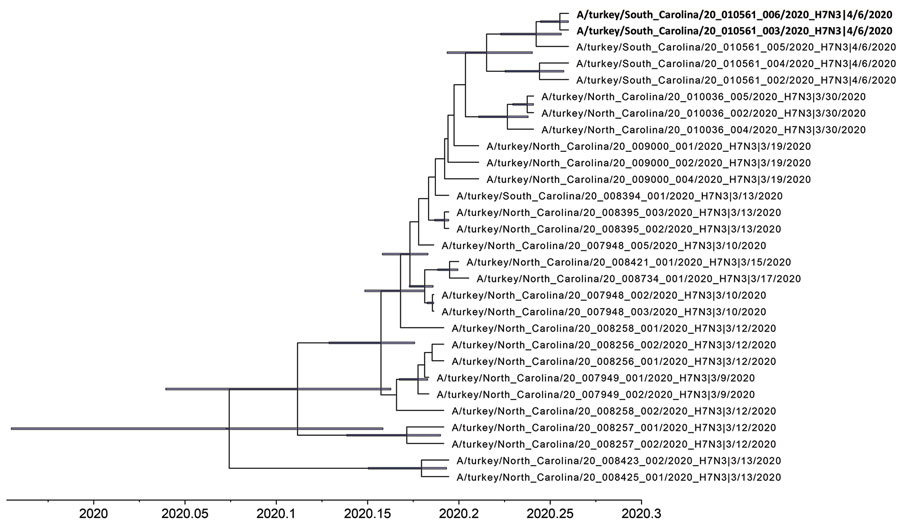Volume 26, Number 12—December 2020
Dispatch
Highly Pathogenic Avian Influenza A(H7N3) Virus in Poultry, United States, 2020
Figure 1

Figure 1. Time-scaled Bayesian maximum clade credibility tree of the concatenated whole genome of highly pathogenic avian influenza A(H7N3) viruses from South Carolina (bold) and North Carolina, USA. Node bars represent 95% Bayesian credible intervals for estimates of common ancestry.
1These authors contributed equally to this article.
Page created: August 21, 2020
Page updated: November 19, 2020
Page reviewed: November 19, 2020
The conclusions, findings, and opinions expressed by authors contributing to this journal do not necessarily reflect the official position of the U.S. Department of Health and Human Services, the Public Health Service, the Centers for Disease Control and Prevention, or the authors' affiliated institutions. Use of trade names is for identification only and does not imply endorsement by any of the groups named above.